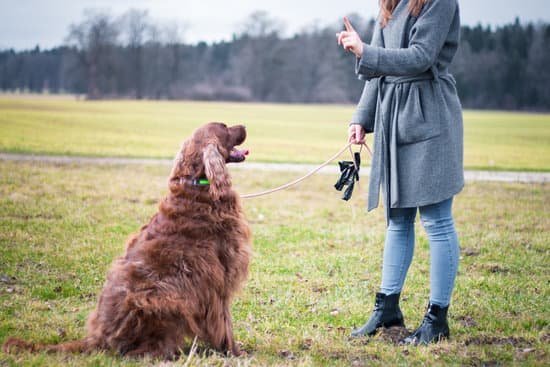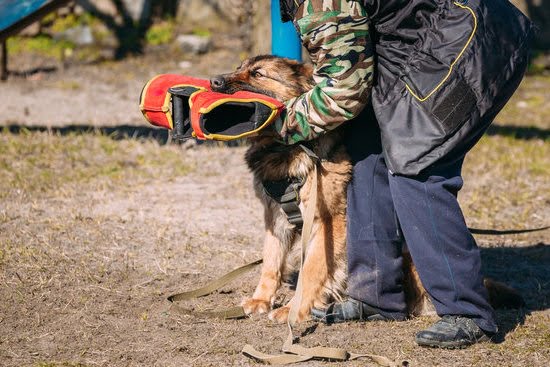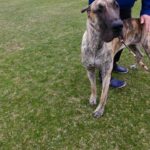Are you dealing with a reactive dog and wondering how to train a dog to not be reactive? It’s essential to understand the underlying reasons behind a dog’s reactive behavior before implementing training techniques. In this article, we’ll explore various aspects of canine reactivity, including recognizing the signs, positive reinforcement training techniques, desensitization and counter-conditioning, management strategies, seeking professional help, exercise and mental stimulation, as well as the importance of patience and consistency in training.
Dogs may exhibit reactive behavior for various reasons, such as fear, anxiety, lack of socialization, past trauma, or even genetic predisposition. Understanding these factors is crucial in addressing and modifying a dog’s reactive response. By recognizing the signs of reactivity and implementing positive reinforcement training techniques like desensitization and counter-conditioning, it is possible to modify a dog’s behavior and reduce reactivity over time.
In addition to training techniques, management strategies play a significant role in helping a reactive dog navigate various situations. Seeking professional help from a certified dog trainer or behaviorist can also provide valuable guidance in addressing your dog’s reactivity. Lastly, we will discuss the importance of exercise and mental stimulation for dogs in reducing reactivity while emphasizing patience and consistency in the training process.
Recognizing the Signs of Reactivity in Dogs
When it comes to recognizing reactive behavior in dogs, it is important for dog owners to be aware of the common signs that indicate a reactive response. Understanding these behaviors can help in addressing and modifying the dog’s reactivity through training and management techniques. Here are some common behaviors that may suggest a dog is being reactive:
- Barking, growling, or lunging at other dogs, people, or stimuli
- Stiff body language, raised hackles, or showing teeth
- Pulling on the leash or attempting to escape from a situation
- Pacing, whining, or excessive panting in stressful situations
It is important to note that these behaviors may vary from one dog to another, and some dogs may exhibit more subtle signs of reactivity. By being observant of your dog’s body language and behavior, you can better understand their triggers and work towards modifying their reactive responses.
In addition to these overt signs of reactivity, it is also essential for dog owners to pay attention to their pet’s overall stress level and emotional state during various situations. This includes monitoring their breathing rate, ear position, and overall posture as indications of heightened arousal or anxiety. By recognizing these signs early on, dog owners can take proactive steps to address reactivity in their pets before it escalates into a more serious issue.
Positive Reinforcement Training Techniques
Understanding Positive Reinforcement
Positive reinforcement involves rewarding a dog for demonstrating the desired behavior. This can be in the form of treats, praise, or toys, and it serves to reinforce the idea that exhibiting the desired behavior leads to a positive outcome. It is important to note that positive reinforcement should be immediate and consistent for it to effectively modify reactive behavior in dogs.
Clicker Training
Clicker training is a popular method of positive reinforcement training that can be particularly effective for modifying reactive behavior in dogs. A clicker is used to make a distinct sound that signals to the dog that they have performed the desired behavior and will receive a reward. This clear communication helps the dog understand which behaviors are being reinforced.
Creating Positive Associations
Another key aspect of using positive reinforcement to modify reactive behavior in dogs is creating positive associations with triggers that typically elicit a reactive response. For example, if a dog is reactive towards other dogs, gradually exposing them to other dogs while providing treats or praise can help change their emotional response from one of fear or aggression to one of positivity.
By employing these positive reinforcement techniques, dog owners can successfully modify their pet’s reactive behavior over time. It is crucial to be patient and consistent with these methods, as changing ingrained patterns of reactivity takes time and dedication.
Desensitization and Counter-Conditioning
Gradual Exposure
One of the key components of desensitization and counter-conditioning is exposing the dog to the trigger in a controlled and gradual manner. This means starting with a very low-intensity version of the trigger and slowly increasing the intensity or duration as the dog becomes more comfortable.
For example, if a dog is reactive towards other dogs, you may start by having them see another dog from a distance where they do not react, and then gradually decrease the distance over time.
Changing Emotional Response
While gradually exposing the dog to triggers is important, it is equally crucial to change their emotional response to these triggers. This involves pairing the presence of the trigger with something positive, such as treats or toys, to create a new association. Over time, this can help the dog learn that encountering the trigger results in something enjoyable rather than something fearful or stressful.
Consistency and Patience
Desensitization and counter-conditioning are not quick fixes, and they require consistent effort from pet owners. It’s important to be patient with your dog during this process as progress may be slow at first. Consistent training sessions and positive reinforcement are key to helping a reactive dog overcome their fears and anxieties. With time and dedication, desensitization and counter-conditioning can be highly effective in modifying a dog’s reactive behavior.
Management Strategies
Reactive behavior in dogs can present a challenge for owners, but there are several management strategies that can help mitigate these issues. One effective tool is the use of a head halter or front-clip harness to provide better control of the dog during walks.
These tools can help prevent the dog from pulling and lunging, reducing the likelihood of reactive behavior. Additionally, using a double-ended leash can give owners more control over their dog’s movements, allowing for quick redirection when necessary.
Another important management strategy is to create distance between the reactive dog and potential triggers. This may involve walking in less crowded areas, crossing the street when approaching other dogs or people, or simply stepping to the side to create physical space. By maintaining distance from triggers, owners can help prevent their dog from becoming overstimulated and reacting negatively.
Furthermore, implementing structured routines and consistent rules at home can also contribute to managing a reactive dog. Predictability and routine can provide a sense of security for the dog, potentially reducing stress and reactivity. Creating “safe spaces” with comfortable bedding or crates can offer a place where the dog can retreat when feeling overwhelmed.
These management strategies are just some of the many tools and techniques available to help owners manage their reactive dogs in various situations. By combining these methods with positive reinforcement training techniques and seeking professional help when needed, owners can work towards modifying their dog’s reactive behavior effectively.
| Management Strategy | Description |
|---|---|
| Use of head halter or front-clip harness | Provides better control during walks and prevents pulling/lunging |
| Create distance from triggers | Walking in less crowded areas, crossing streets, stepping aside to maintain space |
| Structured routines and consistent rules at home | Offering predictability and creating safe spaces for the dog |
Seeking Professional Help
For owners struggling to train a reactive dog, seeking professional help from a dog trainer or behaviorist can be immensely beneficial. These professionals have the knowledge and expertise to assess the specific triggers and behaviors that are causing reactivity in a dog, and can provide personalized training plans to address these issues. Here are some benefits of consulting a professional for reactive dogs:
1. Specialized Expertise: Professional dog trainers and behaviorists specialize in understanding canine behavior and training techniques. They can accurately assess the underlying reasons behind a dog’s reactive behavior and create a customized training plan to address these issues.
2. Personalized Training Plans: A professional will develop a training plan tailored to the specific needs of the reactive dog, taking into account their triggers, environment, and individual personality. This personalized approach is crucial for effectively modifying reactive behavior.
3. Support and Guidance: Working with a professional provides owners with ongoing support, guidance, and feedback throughout the training process. They can offer valuable insights and advice on how to manage reactivity, as well as strategies for long-term success.
Ultimately, seeking the help of a professional when dealing with a reactive dog can make a significant difference in modifying their behavior and improving their quality of life. With their expertise and support, owners can gain the necessary tools and knowledge to successfully train their dogs to not be reactive.
Exercise and Mental Stimulation
Dogs, like humans, benefit from regular exercise and mental stimulation. It is essential to understand that a lack of physical activity and mental enrichment can lead to behavioral issues in dogs, including reactivity. Regular exercise helps release pent-up energy, reduces stress, anxiety, and boredom, and promotes overall well-being in dogs. Mental stimulation through interactive toys, puzzles, and training exercises can also help keep their minds engaged and prevent destructive behaviors.
According to the American Kennel Club (AKC), most dogs require 30 minutes to two hours of physical activity each day, depending on their breed, age, and health. Breeds with high energy levels or working dog backgrounds may require more vigorous activities to satisfy their exercise needs. Without adequate physical activity, dogs may become restless, anxious, or frustrated, leading them to exhibit reactive behaviors such as barking, lunging at other animals or people, or displaying aggressive tendencies.
In addition to physical exercise, mental stimulation is crucial for reducing reactivity in dogs. Engaging a dog’s mind can tire them out just as much as physical exertion does. Interactive toys that dispense treats when manipulated by the dog encourage problem-solving skills while also providing mental enrichment.
Training sessions that challenge the dog’s obedience and focus can also be mentally stimulating. By incorporating both physical activity and mental enrichment into a dog’s daily routine, owners can help reduce their reactivity and promote a balanced state of mind.
| Benefit | Fact |
|---|---|
| Regular Exercise Reduces Stress | Daily exercise helps lower stress levels in dogs |
| Mental Stimulation Prevents Destructive Behaviors | Engaging a dog’s mind through interactive toys reduces destructive behaviors |
| Amount of Exercise Needed Varies by Breed | Different breeds have different exercise needs based on their energy levels |
Patience and Consistency
In conclusion, training a reactive dog to not be reactive requires a significant amount of patience and consistency. It is essential for dog owners to understand that modifying a dog’s reactive behavior takes time and effort, and there are no quick fixes.
Consistent training methods, positive reinforcement, desensitization, and counter-conditioning are crucial components of the training process. By being patient and consistent with these techniques, it is possible to help a reactive dog become more calm and well-behaved.
Additionally, seeking professional help can provide valuable support and guidance for training a reactive dog. A professional dog trainer or behaviorist can assess the specific triggers causing the reactivity in a dog and create an individualized training plan to address those issues. Their expertise can make the training process more effective and efficient, ultimately leading to better results for the dog and its owner.
It’s important for dog owners to remember that exercise and mental stimulation are also key factors in reducing reactivity in dogs. Regular physical activity and enrichment activities can help alleviate stress and anxiety in dogs, making them less likely to exhibit reactive behaviors.
By incorporating these elements into their daily routine, owners can further support their efforts to train a dog to not be reactive. Overall, with dedication, persistence, and the right approach, it is possible to successfully reduce reactivity in dogs through proper training methods.
Frequently Asked Questions
Can You Train a Dog Out of Reactivity?
Yes, it is possible to train a dog out of reactivity. This typically involves desensitization and counterconditioning techniques to help the dog associate the trigger of its reactive behavior with something positive and non-threatening.
How Do I Train My Dog to Be Non Reactive?
Training a dog to be non-reactive involves consistent and patient training techniques. This may include using positive reinforcement to reward calm behavior, working on obedience commands, and gradually exposing the dog to triggers in a controlled environment.
How Do You Prevent Reactivity in Dogs?
Preventing reactivity in dogs involves early socialization, proper training, and addressing any underlying issues such as fear or anxiety. Exposing the dog to various situations, people, and animals in a positive way can also help prevent reactive behavior from developing in the first place.

Welcome to the blog! I am a professional dog trainer and have been working with dogs for many years. In this blog, I will be discussing various topics related to dog training, including tips, tricks, and advice. I hope you find this information helpful and informative. Thanks for reading!





